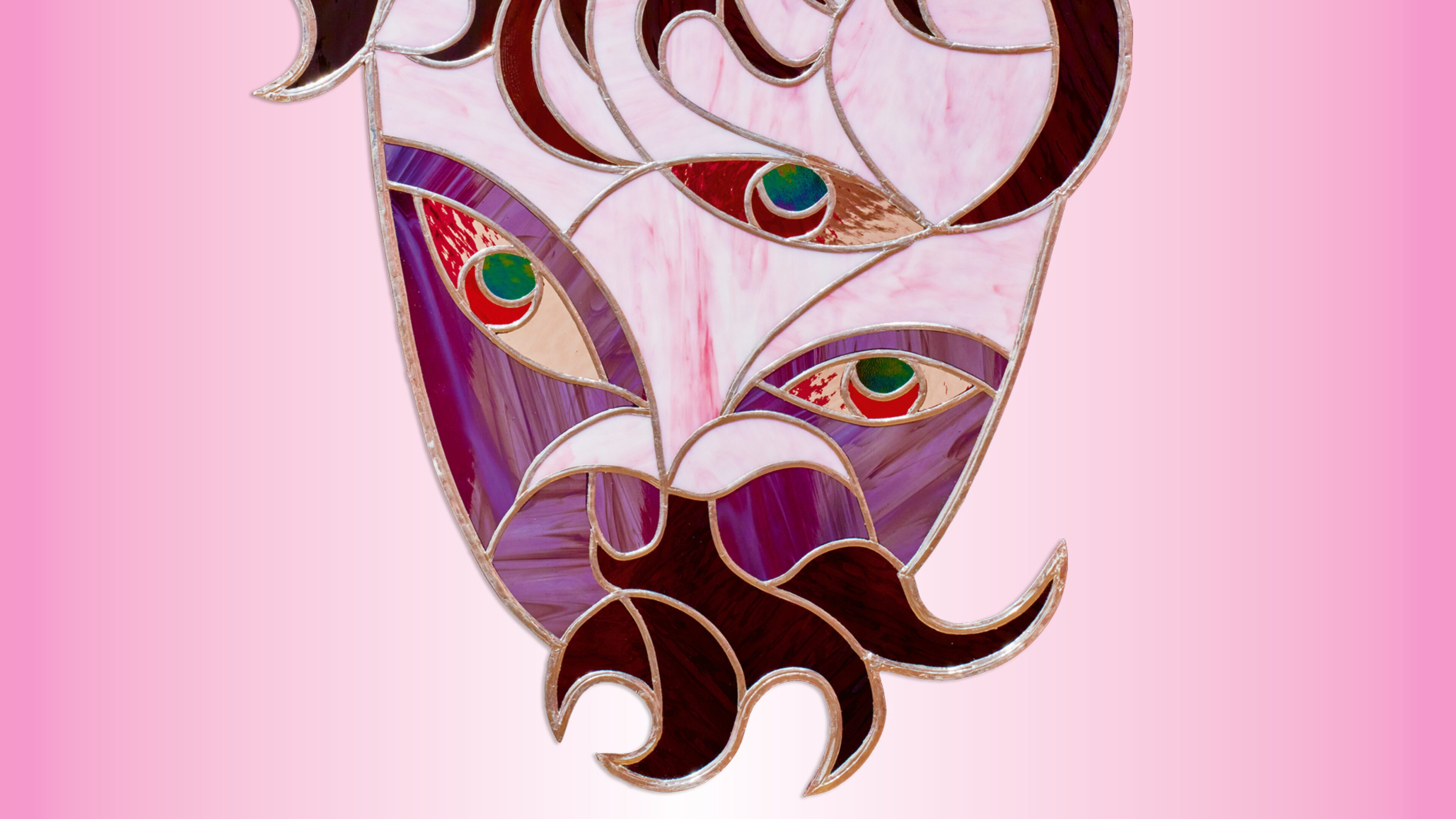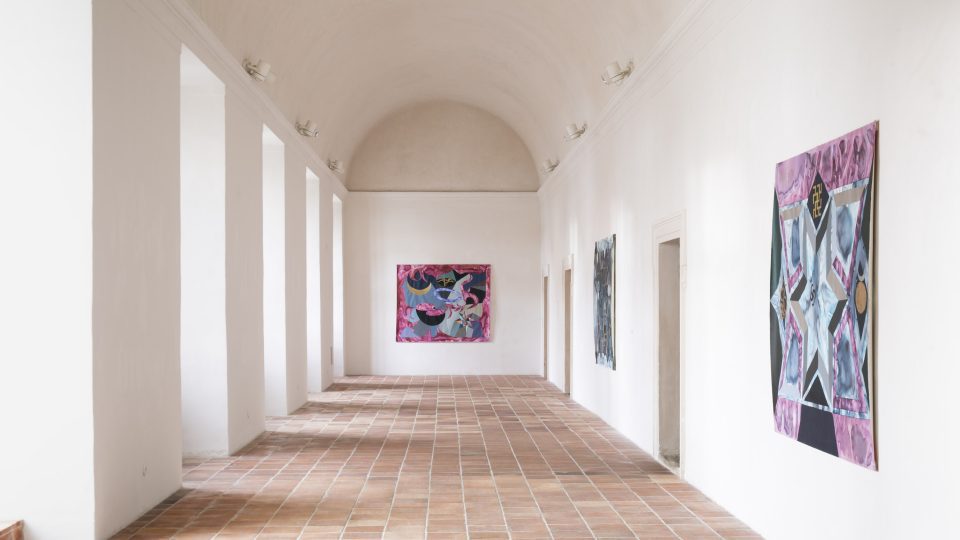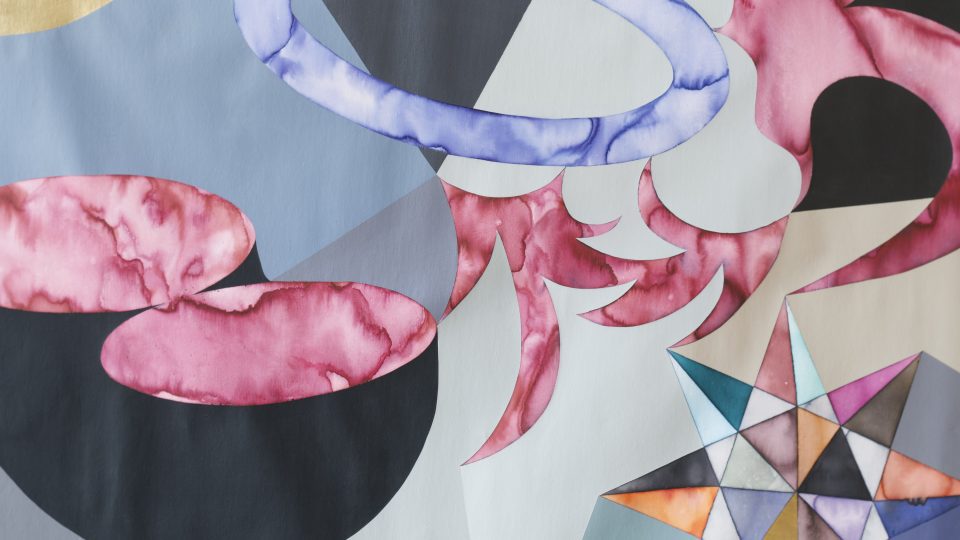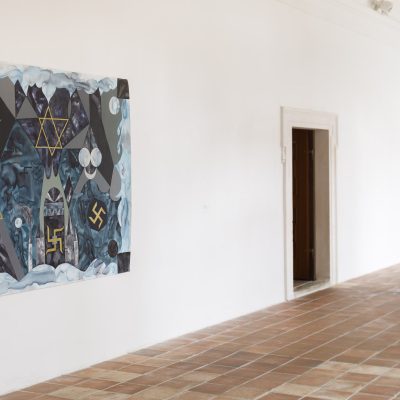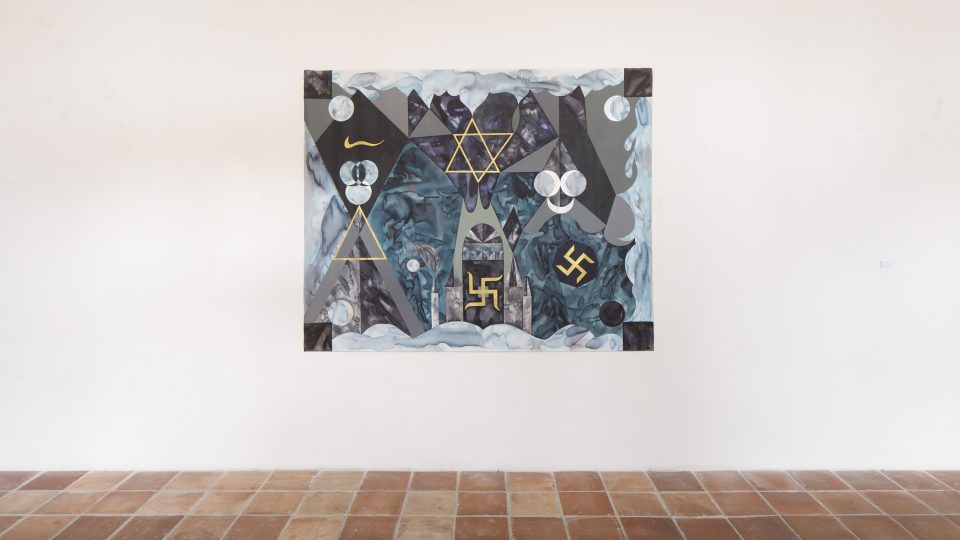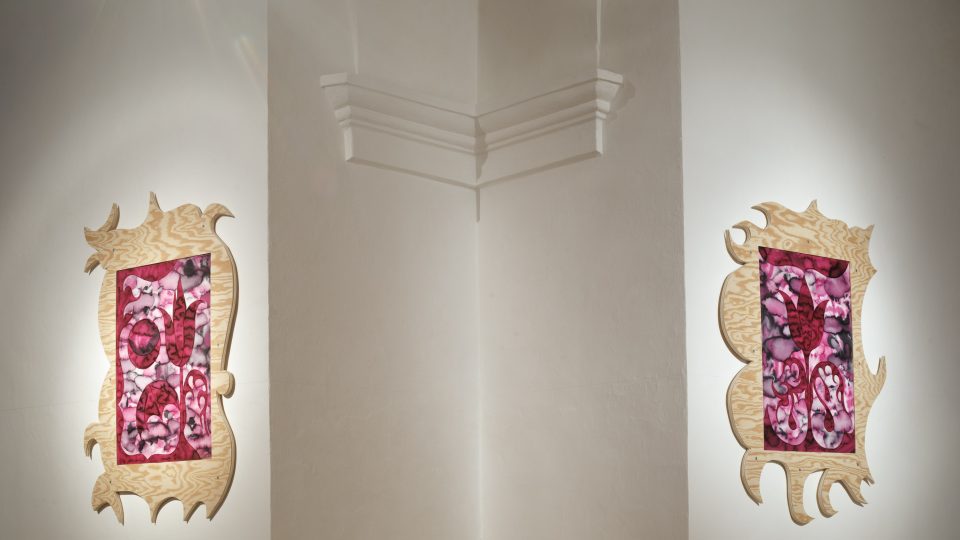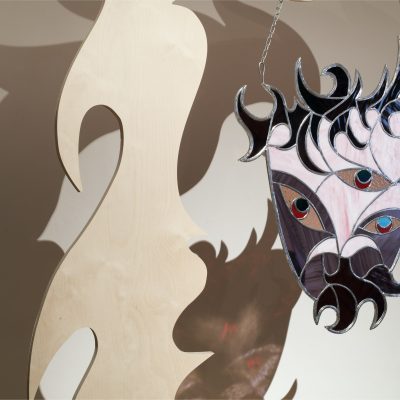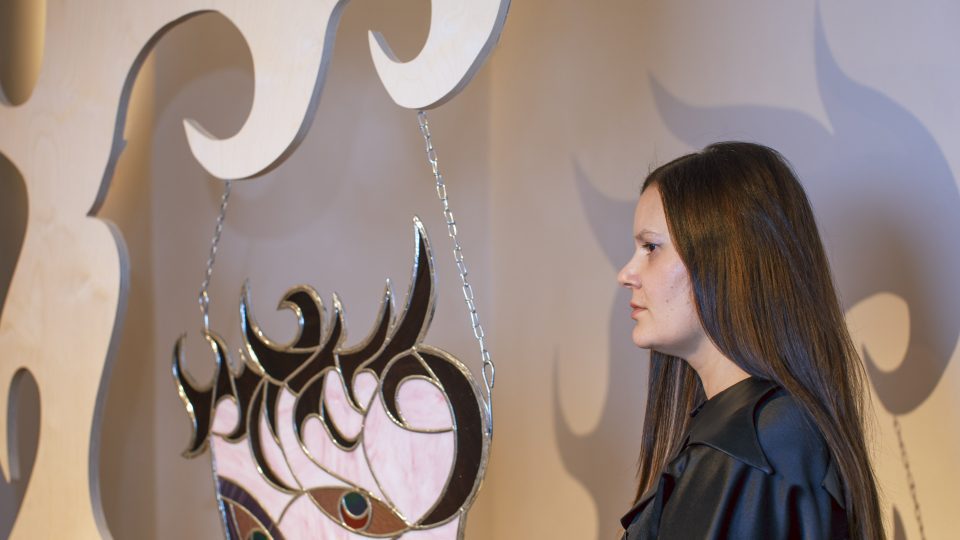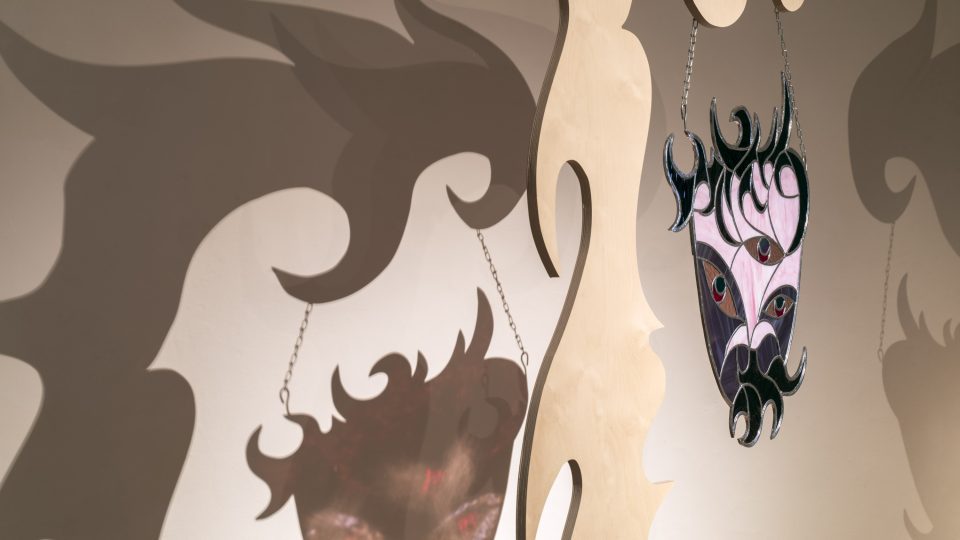The exhibition with the mysterious title Viscum Album presents the work of Anežka Hošková, an established Czech artist with a distinctive style who has contributed to reintroducing romantic and emotional tendencies into contemporary art. In terms of subject matter, her drawings, paintings, stained glass and performative installations place her within the international stream of mystical and associative art characterised by distinctive features of post-internet aesthetics.
Viscum Album (aka ‘mistletoe’), a metaphorical presentation of Hošková’s art in GASK’s Projectroom exhibition space, focuses on three themes in her work, reflecting multiple media. For this exhibition, a distinctive installation from an earlier group show dedicated to the life and work of Jindřich Chalupecký is complemented by an iconic work inspired by feminist ideas and women’s themes. On a third level, Hošková explores the aesthetics of the Baroque Gothic by creating a new site-specific piece over the course of the exhibition that will become a part of the installed set of works.
As one enters the exhibition, the first work one encounters is Hošková’s iconic installation Omnia Flammis Data (2022), provided on loan from the Klatovy / Klenová Gallery. This piece was originally made upon the instigation of the Jindřich Chalupecký Society when it organised the exhibition The Worlds of Jindřich Chalupecký at Prague City Gallery. For this large exhibition, a number of renowned curators collaborated with several contemporary artists in order to look at this important Czech art historian and theorist of the second half of the 20th century through the lens of Chalupecký’s activities on the domestic art scene as well as through his wide-ranging international work.
Anežka Hošková was directly invited by art historian Tomáš Pospiszyl to create an artwork that would respond to Chalupecký’s book The Expressionists. To this end, Hošková took as her main motif the charismatic author Ladislav Klíma, a conflicted, torn personality who burned part of his work, and it is this fact that inspired the title of her work, Omnia Flammis Data – ‘Everything is thrown into the fire’. Hošková created a split portrait of Klíma using stained glass, alongside other literary greatest such as Jakub Deml, Jaroslav Hašek and Richard Weiner, who are depicted in the form of watercolour flowers.
At the far end of one of the rooms in the Projectroom exhibition space is a work in which Hošková explores a feminist question. This is her 2016 painting Saint Agatha, which relates to the early Christian martyr and patron saint of women suffering from breast cancer. According to legend, Saint Agatha’s breasts – that symbol of femininity and motherhood – were cut off as part of her torture. This large painting is complemented by two other powerful paintings, Analog Witch I and Analog Witch II, which work with magical geometric lines influenced by Baroque Gothic architecture and pagan rituals. With these pieces, Hošková is essentially performing deep work with symbols such as the swastika, whose dark energy is processed in a thoroughly ironic manner.
Given that the author has long been interested in the spirit of sacred buildings, she decided to respond to the genius loci here as well. Her exhibition was enriched by a work based on research and study in the Kutná Hora region, with a significant emphasis on the Jesuit college. The newly created painting Sanctum Amoris, inspired by the architecture and spirit of the Baroque building, the personality of Jan Blažej Santini, and the historical layers of the city itself, can be seen at the exhibition until 7th of September.
Anežka Hošková (1982, Prague) a graduate of Brno University of Technology’s Faculty of Fine Arts, where she studied under Václav Stratil, works with drawing, painting, performative installations and stained glass. With her distinctive style, she is a prominent member of her artistic generation. She also has long-standing ties to the alternative music scene and performs as DJ Black Dumpling. A co-founder of the A.M. 180 Gallery, the A.M.180 Collective and the Creepy Teepee festival, Hošková has exhibited extensively on the independent art scene at home and abroad, but she has also shown her work at established institutions such as Prague City Gallery, Bratislava City Gallery, the Kim? Contemporary Art Centre in Riga and Bunkier Sztuki in Krakow. In addition, she participated in the 25th edition of the International Glass Symposium in Nový Bor. Her work can be found in numerous public and private collections.
